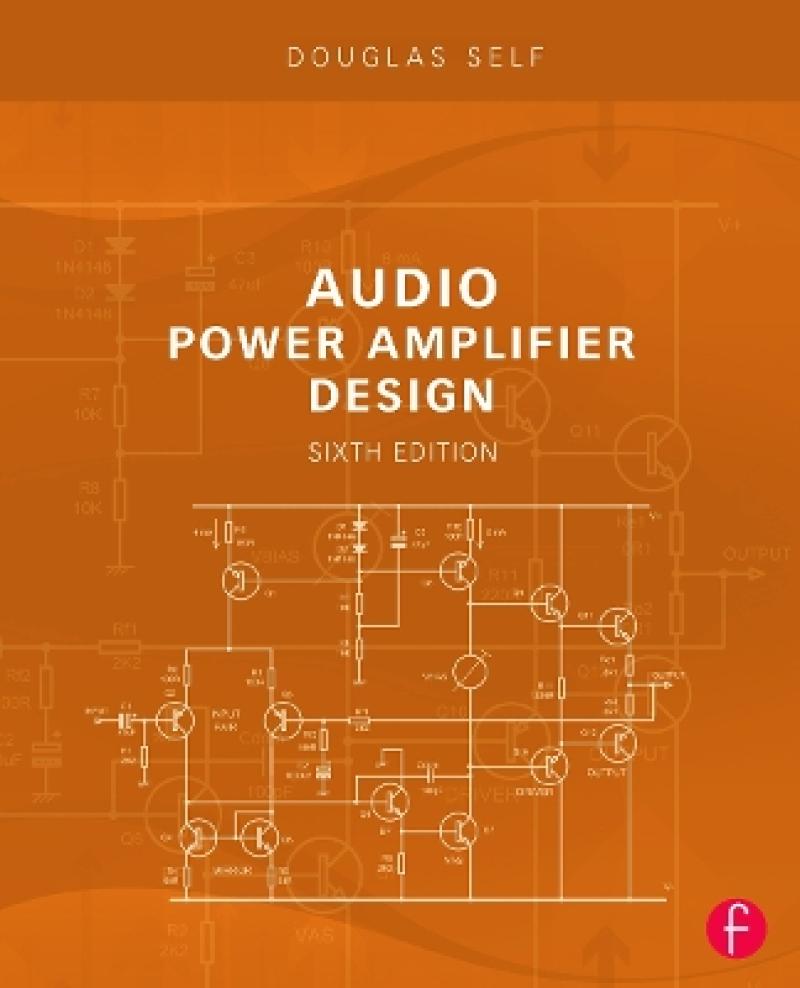This is the essential book reference for amplifier designers. Douglas Self covers all the design issues of noise, distortion, power supply rejection, protection, reliability, and layout. He describes advanced forms of compensation that give dramatically lower distortion. This edition is much expanded, and packed with new information. It is a must-have for audio power amplifier professionals and audiophiles, amateur constructors and anyone with intellectual curiosity about the struggle towards technical excellence. New to the sixth edition: The characteristics of the audio signal The principles of distortion Feedback intermodulation distortion Non-switching output stages VAS distortion explained Push-pull VAS configurations Output-inclusive compensationIn addition, five amplifier design examples that illustrate important design principles are examined and measured in detail. These can be straightforwardly adapted to specific requirements.This new edition also includes a wealth of material on the XD crossover-displacement principle (invented by the author and in use by Cambridge Audio), four-stage amplifier architectures, error correction, current-mirrors, power transistors with internal sensing diodes, amplifier bridging, input-stage-common-mode distortion, amplifier stability, output stages with gain, inrush current suppression, DC servo design, thermal protection, cooling fan control, advanced line input stages, testing and safety, infrared remote control, signal activation, 12V trigger control, the history of solid-state amplifiers and much more. Simple procedures for heatsinking and power supply design are given.
Les mer
Chapter 1 Amplifiers and The Audio Signal; Chapter 2 The Basics of Distortion; Chapter 3 Negative Feedback; Chapter 4 Amplifier Architecture, Classes, and Variations; Chapter 5 General Principles and Distortion Mechanisms; Chapter 6 The Input Stage; Chapter 7 The Voltage-Amplifier Stage; Chapter 8 The Push-pull Voltage-Amplifier Stage; Chapter 9 The Output Stage; Chapter 10 Output Stage Distortions; Chapter 11 More Distortion Mechanisms; Chapter 12 Closely Observed Amplifiers: Design Examples; Chapter 13 Compensation and Stability; Chapter 14 Output Networks and Load Effects; Chapter 15 Speed and Slew-rate; Chapter 16 Power Dissipation in Amplifiers; Chapter 17 Class-A Power Amplifiers; Chapter 18 Class XD: Crossover Displacement; Chapter 19 Class-G Power Amplifiers; Chapter 20 Class-D Power Amplifiers; Chapter 21 FET Output Stages; Chapter 22 Thermal Compensation and Thermal Dynamics; Chapter 23 The Design of DC Servos; Chapter 24 Amplifier and Loudspeaker Protection; Chapter 25 Layout, Grounding, and Cooling; Chapter 26 Power Supplies and PSRR; Chapter 27 Power Amplifier Input Systems; Chapter 28 Input Processing and Auxiliary Systems; Chapter 29 Testing and Safety; Chapter 30 A Brief History of Solid-state Power Amplifiers;
Les mer
Produktdetaljer
ISBN
9780240526133
Publisert
2013-06-18
Utgave
6. utgave
Utgiver
Vendor
Focal Press
Vekt
1315 gr
Høyde
235 mm
Bredde
191 mm
Aldersnivå
P, 06
Språk
Product language
Engelsk
Format
Product format
Heftet
Antall sider
718
Forfatter
